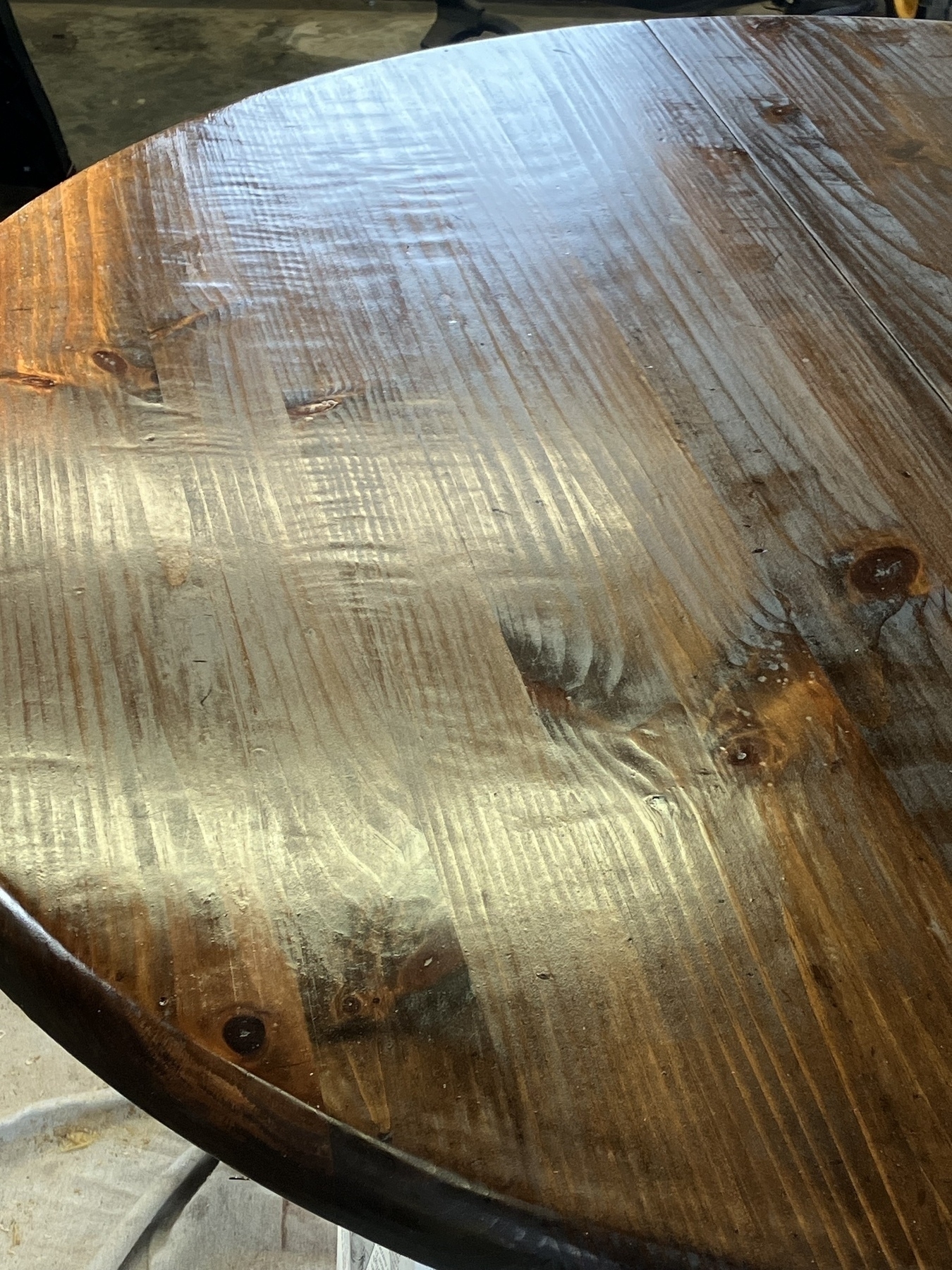This 1975 documentary about a Kentuckian chairmaker is worth watching.
How about some garden pictures?
Kitchen garden (other vegetables and herbs are spread throughout our backyard):

Mountain mint about to bloom:

Concord grapes:

Broccoli:

Sunflower:

Robin Wall Kimmerer:
The animacy of the world is something we already know, but the language of animacy teeters on extinction—not just for Native peoples, but for everyone. Our toddlers speak of plants and animals as if they were people, extending to them self and intention and compassion—until we teach them not to. We quickly retrain them and make them forget. When we tell them that the tree is not a who, but an it, we make that maple an object; we put a barrier between us, absolving ourselves of moral responsibility and opening the door to exploitation. Saying it makes a living land into “natural resources.” If a maple is an it, we can take up the chain saw. If a maple is a her, we think twice.
Note that she says “we think twice”—because we do in fact sometimes take up the chainsaw.
I believe this is what a truly functional animism offers over generic environmentalism. The latter too often drifts into the idea that the world would be better without humans. It’s too cause and effect—rooted in dead materialism—where animism is more relationship focused.
When I was a vegan, I came across that sort of environmentalism. To clarify, I’m talking about ethical, animal rights-style veganism—not the sort that seems to be a current diet fad.
What ultimately turned me away from ethical veganism was the realization that it is utterly unnatural—that predation is at the heart of the living world. In short, the ethical veganism I was familiar with at the time needed a strong dose of animism.
Back to the chainsaw, one of the questions that first confronted me when I started woodworking was how to square it with my values. How can a self-confessed tree-hugger build things from intentionally killed trees? I believe the answer has to do with the long-standing relationship between humans and trees and humanity’s role as a beautifier and craftsman.
As with humans eating animals, there are two opposing but complementary mistakes with regard to trees. One is that humans must never cut down trees and the other is that trees are “natural resources” that must be “managed.” The mistakes are complementary because they forget relationship, in opposite directions. Humans and trees, however, have had a long, mutually beneficial relationship.
What would an animist woodworking practice look like? I have a few preliminary ideas, which I will continue trying to integrate into my life. Such a practice might:
- Avoid a total reliance on machines. Machines are brute force tools–and that is not always inappropriate. Hand tools, however, require more attention to the character of the wood upon which you work. I’m not a hand tool purist, but I do want to make sure they’re always a part of my repertoire because of the quality of attention they cultivate.
- Restore what is already built. If one of the chief roles of humanity in the world is to be a beautifier, then it is right that beauty be preserved as much as possible. Waste should be reduced not only for the obvious environmental reasons, but also because our role should not be neglected or forgotten. It both honors us and the trees with whom such beauty is created. Update: A good extension of this point from @dwalbert: “Make things that can be repaired, and that are worth the trouble of repairing.”
- Use wood from local, native trees where possible. Such a practice places your work. It embeds it within the historic, creative relationship between humans and their tree neighbors. This is something I have not done, but I have some leads.
Early on in my gardening experience (2020 or 2021, probably), I was working on something in the raised beds and worried about killing some creature as I worked. At the time, the pendulum was obviously swinging a bit too far in one direction. The thought occurred to me, “We cannot be precious about death.” This arrested the swing of the pendulum.
Death is a part of life; in fact, it is necessary for its continuance. A healthy perspective–whether it’s animist or whatever perspective is most meaningful to you–takes this into consideration. There is no standpoint of purity; we’re all guilty of violence, one way or another. In a properly constituted relationship, however, the violence is not psychologically repressed. It is understood, and made whole by reciprocity and sacrifice.
Thomas Berry: “the universe is a communion of subjects rather than a collection of objects.” (Via Braiding Sweetgrass)
I’ve just sent a chair restoration question to Tom Johnson of Thomas Johnson Antique Furniture Restoration in Gorham, Maine. (If you were a fan of his channel, you’d find that funny.) I edited the message a few times to tone down the fanboy. But, really, I find him very inspirational.
I got a bit aggressive while sanding off the old finish and it introduced a waviness to one side of the table, which became obvious after I applied a finish. Today I’m going to sand that down and try again. My goal for this weekend is to completely finish the table and get started on the chairs.

There are several sparrows dustbathing among the flowers and sitting in the shade of the grape arbor right now. This’ll do.
I updated my Sanity Project page. This page is the story of our garden, from 2020 onward. Today I updated the page from Fall 2022 to the end of this past winter. Also updated the “future plans” section.
I had forgotten about the Twitter house style until I recently followed some folks on Mastodon via micro.blog. The silly non sequiturs. The heavy irony. The cliches. All very jarring. I unfollowed them, inwardly thanked @manton for micro.blog, and went back to reading folks with uncolonized brains
Isn’t this some beautiful kale and chard?
